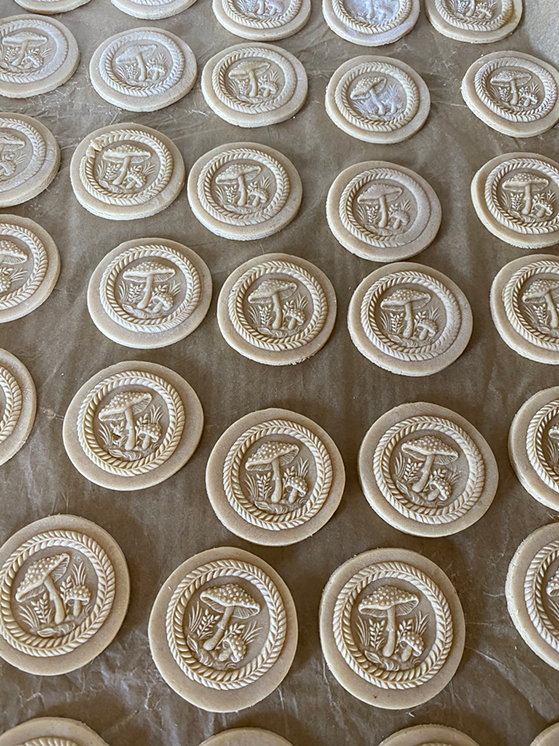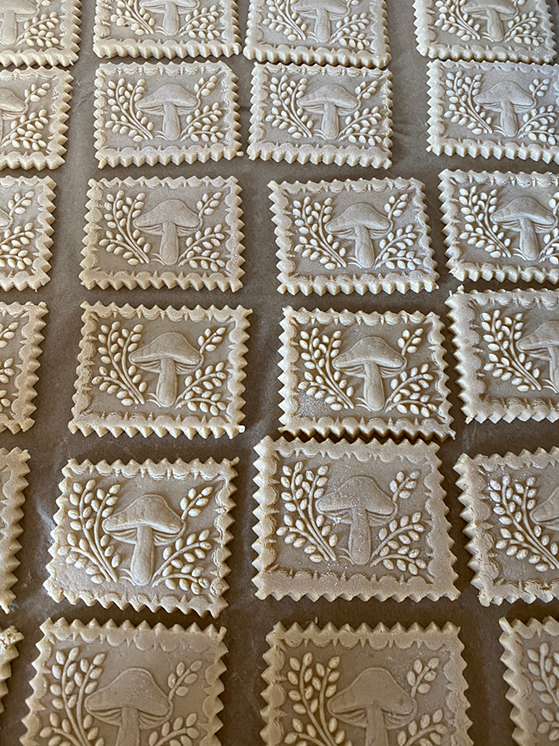German Springerle
Springerle are German anise-flavored cookies that go back at least 700 years in their rich tradition as special gifts during the holidays and other celebrations. Over time they develop a delicately crispy-crunchy, shattering exterior and a slightly chewy center. This authentic Springerle recipe goes back to the Swabia region of Germany where these famous cookies originated.
Ingredients
3 large eggs , room temperature (the eggs must be large; if you are using medium add an additional egg)
3 cups (350 grams) powdered sugar (confectioner's sugar)
1 teaspoon quality pure vanilla extract (or 2 packets of vanilla sugar)
1/4 to 1/2 teaspoon quality 100% pure anise oil (not extract), how much you use depends on how strong of an anise flavor you want.
3 cups (350 grams) all-purpose flour (if measuring in cups start with slightly less flour and add the rest as needed if the dough is too soft/sticky)
1/4 teaspoon baker's ammonia *slightly less than 1/4 teaspoon
1/4 teaspoon salt
zest of one lemon
2 tablespoons whole anise seeds
Instructions
Place the eggs in a stand mixer with the whisk attachment in place. Beat the eggs until foamy. Add the powdered sugar, a little at a time along with the vanilla extract and anise oil. (sometimes I skip the anise oil)
Once all the powdered sugar has been added, continue to beat the mixture for 10 minutes. Yes, 10 full minutes, do not reduce the time. The batter needs to be very loose and airy.
Combine the flour, baker's ammonia and salt in a bowl. Add HALF of the flour mixture to the wet mixture along with the lemon zest and beat it for a full 15 minutes, do not reduce the time (if the mixture is too dry for your whisk attachment, use the paddle attachment).
Attach the paddle attachment, add the remaining flour and beat for another 5 minutes.
The dough should be very soft but not wet and sticky. If the dough is too dry or stiff mix in a little more lightly beaten egg.
Form the dough into a ball, flatten it to an inch-thick disk, wrap it in plastic wrap and refrigerate for at least an hour or overnight.
The next day roll out the cold dough to about 1/3 inch thick (1 cm) on a floured work surface.
Use your molds or rolling pin to make the shapes and cut them out with a sharp knife or pastry cutter. If you're using molds lightly dust them with flour to prevent the dough from sticking.
Toast the whole anise seeds in a dry pan over medium-high heat until aromatic, being careful not to let them scorch. Place the anise seeds on a lined cookie sheet, spreading them out evenly.
Lay the Springerle on top of the anise seeds on the baking sheet. Let them dry at room temperature for a full 24 hours, longer if you're in a place with high humidity. The outside of the Springerle should be dry.
After the cookies have dried for at least 24 hours, lay a damp towel on the counter and gently press the Springerle down onto it to very lightly and evenly moisten the bottoms. Return the Springerle back to the cookie sheet.
In an oven preheated to 300 degrees F with the rack positioned in the middle, bake the cookies for 20-30 minutes. Do not let the cookies turn golden, they're supposed to stay very pale, basically the same color as when you put them in the oven.
The Springerle should have risen evenly to create their characteristic "feet" or platform underneath. Let the cookies cool off completely. They will become very hard as they cool.
Springerle are traditionally stored in airtight containers with half of an apple next to them inside the container to create a little bit of moisture to gradually soften the cookies over time. Periodically change out the apple. Once the Springerle have slightly softened you can remove the apple and then continue storing them in the airtight container waiting for the flavor to develop.
Most Springerle bakers agree that waiting 3-4 weeks before eating them is best to allow the texture and flavor to develop.
Enjoy these Springerle on their own or, as is tradition, enjoy them with a hot beverage and dip them.

